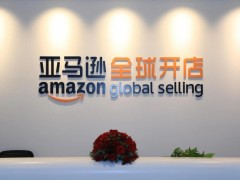Optics store operation planning plan?
一、市场分析
1. 目标市场定位:
- 年龄层:针对年轻人(18-35岁),中年人(36-50岁)和老年人(51岁以上)。
- 消费能力:中高端消费者为主,注重品质和个性化服务。
- 地理位置:选择人流量大的商业区或社区附近。
2. 竞争对手分析:
- 本地市场:分析周边眼镜店的产品、价格、服务等。
- 线上市场:研究电商平台上的眼镜销售情况。
二、产品策略
1. 产品种类:
- 框架眼镜:提供多种款式,从时尚到商务,满足不同消费者需求。
- 隐形眼镜:包括日抛、周抛、月抛等多种类型。
- 太阳镜:设计多样化,满足不同场合的需求。
2. 品牌合作:
- 与知名品牌合作,引入独家产品,提升品牌形象。
- 与设计师合作,推出限量版眼镜。
三、服务策略
1. 专业验光:
- 聘请专业验光师,提供准确的视力检测。
- 定期培训员工,提高专业技能。
2. 售后服务:
- 提供免费眼镜清洁和调整服务。
- 设立快速维修点,解决眼镜损坏问题。
四、营销策略
1. 线上营销:
- 利用社交媒体(如微信、微博、抖音等)进行品牌宣传和产品推广。
- 开展线上促销活动,吸引顾客购买。
2. 线下营销:
- 举办开业庆典,邀请当地名人或网红参与,提高知名度。
- 在商圈投放广告,提高品牌曝光度。
五、运营管理
1. 库存管理:
- 采用先进的库存管理系统,实时监控库存情况。
- 定期进行库存盘点,避免积压和过期。
2. 财务管理:
- 建立严格的财务制度,确保账目的准确性。
- 定期进行财务分析,优化成本结构。
3. 人力资源管理:
- 招聘具有专业知识和良好服务态度的员工。
- 提供培训和发展机会,提高员工满意度和忠诚度。
六、持续改进
1. 客户反馈:
- 定期收集客户反馈,了解他们的需求和建议。
- 根据反馈调整产品和服务策略。
2. 市场动态:
- 关注行业动态和市场趋势,及时调整经营策略。
- 探索新的业务模式,如眼镜租赁、二手眼镜交易等。
总结:
通过以上策划方案,眼镜店可以明确目标市场,提供多样化的产品和专业的服务,同时运用有效的营销策略来吸引和保留客户。在运营管理方面,注重库存、财务和人力资源的管理,以确保店铺的顺利运作。不断收集客户反馈和关注市场动态,以便持续改进和创新,保持竞争力。
Professional answer
I. Market analysis
1. Target market positioning:
- Age group: Target young people (18-35 years old), middle-aged people (36-50 years old) and elderly people (over 51 years old).
- Consumption ability: Mainly middle and high-end consumers, focusing on quality and personalized services.
- Geographic location: Choose a commercial area or community with a large flow of people.
2. Competitor analysis:
- Local market: Analyze the products, prices, services, etc. of surrounding optical stores.
- Online market: Study the sales of glasses on e-commerce platforms.
II. Product strategy
1. Product categories:
- Frame glasses: Provide a variety of styles, from fashion to business, to meet the needs of different consumers.
- Contact lenses: Including daily, weekly, monthly and other types.
- Sunglasses: Diversified designs to meet the needs of different occasions.
2. Brand cooperation:
- Cooperate with well-known brands to introduce exclusive products and enhance brand image.
- Cooperate with designers to launch limited edition glasses.
III. Service strategy
1. Professional optometry:
- Hire professional optometrists to provide accurate vision testing.
- Regularly train employees to improve professional skills.
2. After-sales service:
- Provide free glasses cleaning and adjustment services.
- Set up quick repair points to solve the problem of glasses damage.
IV. Marketing strategy
1. Online marketing:
- Use social media (such as WeChat, Weibo, Douyin, etc.) for brand publicity and product promotion.
- Carry out online promotional activities to attract customers to buy.
2. Offline Marketing:
- Hold an opening ceremony and invite local celebrities or Internet celebrities to participate to increase brand awareness.
- Place advertisements in the business district to increase brand exposure.
V. Operation Management
1. Inventory Management:
- Use an advanced inventory management system to monitor inventory in real time.
- Regularly conduct inventory counts to avoid backlogs and expiration.
2. Financial Management:
- Establish a strict financial system to ensure the accuracy of accounts.
- Regularly conduct financial analysis to optimize cost structure.
3. Human Resource Management:
- Recruit employees with professional knowledge and good service attitude.
- Provide training and development opportunities to improve employee satisfaction and loyalty.
VI. Continuous Improvement
1. Customer Feedback:
- Regularly collect customer feedback to understand their needs and suggestions.
- Adjust product and service strategies based on feedback.
2. Market dynamics:
- Pay attention to industry dynamics and market trends, and adjust business strategies in a timely manner.
- Explore new business models, such as glasses rental, second-hand glasses trading, etc.
Summary:
Through the above planning scheme, the optical shop can identify the target market, provide diversified products and professional services, and use effective marketing strategies to attract and retain customers. In terms of operation management, focus on inventory, finance and human resources management to ensure the smooth operation of the store. Continuously collect customer feedback and pay attention to market dynamics in order to continuously improve and innovate to maintain competitiveness.
Similar Q&A
recommend How to use Starbucks Douyin group purchase coupons?
E-c News Continuously pushing e-commerce knowledge to you








Latest Q&A More
-
Do I need a trademark to open a franchise store on Pinduoduo to sell books?
#Pinduoduo#
-
How to withdraw from a Pinduoduo store
#Pinduoduo#
-
How to withdraw from Pinduoduo merchants
#Pinduoduo#
-
How to pay fees when closing a Pinduoduo store
#Pinduoduo#
-
How to withdraw from Pinduoduo
#Pinduoduo#
-
Which store on Pinduoduo is authentic?
#Pinduoduo#
-
Which stores on Pinduoduo can buy genuine products?
#Pinduoduo#
-
How to check the store under Pinduoduo
#Pinduoduo#
-
How to receive Pinduoduo online game products
#Pinduoduo#
-
How to sell the electronic version on Pinduoduo
#Pinduoduo#
E-c News 2025-10-14 09:23:32

- African netizens use China Africa cross-border e-commerce platform for online shopping
- how is the new seller of cross-border e-commerce doing?
- how can cross-border e-commerce Amazon sell on Amazon platform without goods?
- Amazon store opening process and cost analysis!
- Amazon plans to expand its pharmacy business on a large scale and will add same day delivery service
